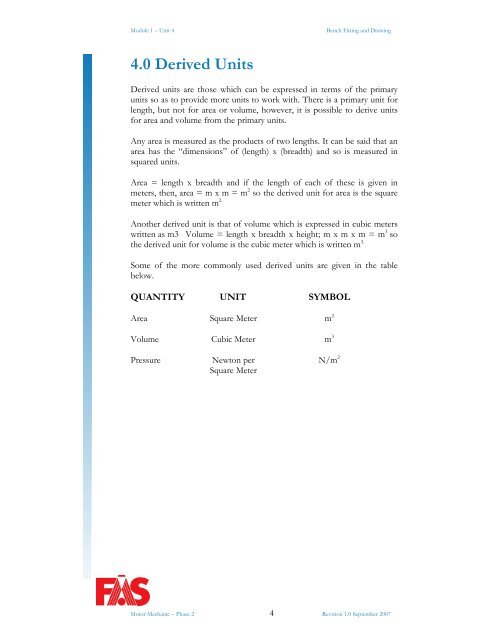TRADE OF HEAVY VEHICLE MECHANIC - eCollege
TRADE OF HEAVY VEHICLE MECHANIC - eCollege
TRADE OF HEAVY VEHICLE MECHANIC - eCollege
Create successful ePaper yourself
Turn your PDF publications into a flip-book with our unique Google optimized e-Paper software.
Module 1 – Unit 4 Bench Fitting and Drawing<br />
4.0 Derived Units<br />
Derived units are those which can be expressed in terms of the primary<br />
units so as to provide more units to work with. There is a primary unit for<br />
length, but not for area or volume, however, it is possible to derive units<br />
for area and volume from the primary units.<br />
Any area is measured as the products of two lengths. It can be said that an<br />
area has the “dimensions” of (length) x (breadth) and so is measured in<br />
squared units.<br />
Area = length x breadth and if the length of each of these is given in<br />
meters, then, area = m x m = m 2 so the derived unit for area is the square<br />
meter which is written m 2.<br />
Another derived unit is that of volume which is expressed in cubic meters<br />
written as m3 Volume = length x breadth x height; m x m x m = m 3 so<br />
the derived unit for volume is the cubic meter which is written m 3.<br />
Some of the more commonly used derived units are given in the table<br />
below.<br />
QUANTITY UNIT SYMBOL<br />
Area Square Meter m 2<br />
Volume Cubic Meter m 3<br />
Pressure Newton per N/m 2<br />
Square Meter<br />
Motor Mechanic – Phase 2 4 Revision 1.0 September 2007
















